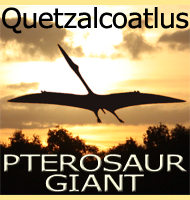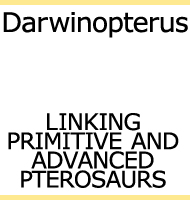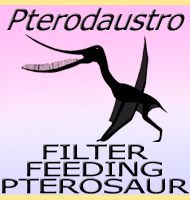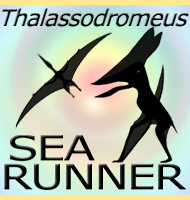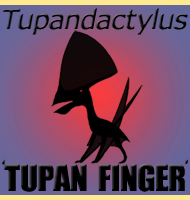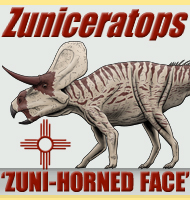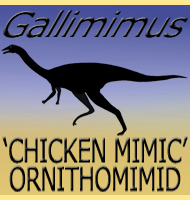


Nyctosaurus
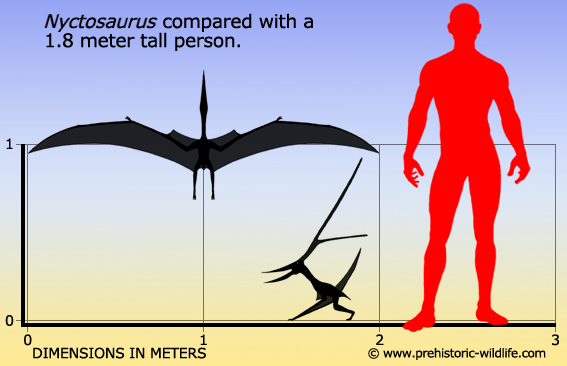
Name:
Nyctosaurus
(Night lizard).
Phonetic: Nick-toe-sore-us.
Named By: Othniel Charles Marsh - 1876.
Synonyms: Nyctodactylus.
Classification: Chordata, Reptilia,
Pterosauria, Pterodactyloidea, Nyctosauridae, Nyctosaurinae.
Species: N. gracilis (type),
N.
nanus, N. lamegoi, N. bonneri.
Type: Piscivore.
Size: 2 meter wingspan, possibly larger.
Known locations: USA, Kansas - Niobrara
Formation.
Time period: Campanian of the Cretaceous.
Fossil representation: Many individuals.
Although
many pterosaurs
sported elaborate head crests, Nyctosaurus
took
things to a new extreme. Rising up to over half a meter high, a
proportionately massive 'L' shaped crest is known to have been
present on Nyctosaurus. This crest was once
thought to have been the
support for a skin sail, but today it is generally accepted that
the crest was more or less as it was preserved, with it sometimes
being referred to as a pterosaur 'deer antler' from its
appearance. Although it may appear cumbersome, the crest was
actually very light, and studies have shown it would have had very
little impact upon the flying ability of Nyctosaurus.
It is however
somewhat harder to say if it actually imparted any positive benefits.
Study
of sub adult specimens has raised the notion that Nyctosaurus
reached
full size within its first year, and that the crest started growing
when the individual in question reached adulthood. The crest may have
been growing throughout the entire adult life of Nyctosaurus,
with
the largest crests belonging to the oldest, and henceforth most
successful individuals. This would serve to persuade potential mates
that the larger crest was superior to the smaller.
Another
special feature of Nyctosaurus is the complete
absence of claws from
the first, second and third digits of the hand. This means that
Nyctosaurus would have had a hard time clinging onto
things while on
the ground and has brought the suggestion that Nyctosaurus
may have
spent most of its time flying in the air. A potential benefit of the
lack of claws however is that the wings would have been even more
streamlined. Because the fossils of Nyctosaurus
are known from the
Niobrara Formation, it's a safe assumption that it would have flown
over the Western Interior Seaway while looking for fish.
With
the exception of the head crest being completely different,
Nyctosaurus often draws comparisons with the
well-known pterosaur,
Pteranodon.
Not only do they have similar body morphology, both
Nyctosaurus and Pteranodon have
been found in the same fossil
formation, and both would have shared the skies of the late
Cretaceous at the same time as one another. However Nyctosaurus
has a
much shorter presence in the fossil record of approximately only half a
million years, whereas Pteranodon spanned over
seven million years.
Because
of its similar body morphology to Pteranodon, Nyctosaurus
may have
flown in a similar manner, including using a process known as dynamic
soaring. Dynamic soaring is where a flying creature such as an
Albatross flies into the trough formed by two waves and into the lee of
a passing wave. The lee is the change that results in stronger air
pressure that occurs as the wave moves along, and this pressure
results in air moving faster over the wings and increasing their lift.
The animal in question can then turn around sharply, a process
called 'wheeling', and then head back towards the trough with a
back wind that further increases speed.
The
number of species attributed to Nyctosaurus has
changed since its
discovery, and even some of the species listed above may yet prove to
be identical to the type species. Only time with further study and
hopefully new fossils will be able to establish the exact species with
certainty.
Further reading
- Notice of a new sub-order of Pterosauria. - American Journal of
Science, 11(3): 507-509. - O. C. Marsh - 1876a.
- Principal characters of American pterodactyls. - American Journal of
Science, 12: 479-480. - O. C. Marsh - 1876b.
- Note on American pterodactyls. - American Journal of Science, 21:
342-343. - O. C. Marsh - 1881.
- New crested specimens of the Late Cretaceous pterosaur Nyctosaurus. -
Pal�ontologische Zeitschrift, 77: 61-75. - S. C. Bennett - 2003.
- Posture, Locomotion, and Paleoecology of Pterosaurs. - Geological
Society of America - S. Chatterjee & R. J. Templin - 2004.
- Aerodynamic characteristics of the crest with membrane attachment on
Cretaceous pterodactyloid Nyctosaurus. - Acta Geologica Sinica, 83(1):
25-32. - L. Xing, J. Wu, Y. Lu & Q. Ji - 2009.
----------------------------------------------------------------------------
Random favourites
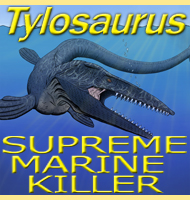 |
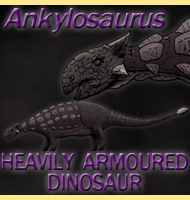 |
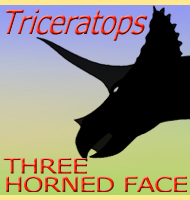 |
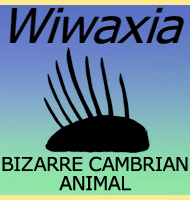 |
